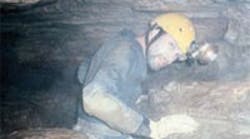How long have you been involved in medical design?
I've been a research scientist for 26 years and have worked in CT (Computed Tomography) for 20 years. In all, I've been with Philips Medical Systems, formerly Picker, for more than 39 years.
How did you get into this field?
I started in 1968, right out of college, with Picker X-Ray, which was eventually bought by Philips. Initially, I was in a small advanced development group. The job was very appealing because of the diverse disciplines involved. I worked in electronics, mechanics, optics, x-ray, photography, television, and later in computers, both hardware and software.
What do you normally do?
A typical day unfolds like a whirlwind, including technical development, troubleshooting new designs (including hardware and software), helping customers with unusual technical issues, working with outside vendors and contractors, evaluating new equipment, and writing reports. I work closely with other electrical, mechanical, and software engineers.
What have you worked on recently?
Currently, I'm the lead systems engineer for the CT main drive system, which rotates and positions the rotor assembly and all the instruments on board. The assembly contains several components that make up the scanner's imaging system. Our latest scanner, the iCT, incorporates a rotor assembly with a mass of more than one ton that spins at rates of up to 220 rpm. The rotor uses a large diameter, state-of-the-art air bearing that has zero friction and produces no audible noise. After researching motors, we selected a curved, segmented, linear induction motor, which has never been applied to CT systems before. It offers high power output, smooth integration to the air bearing, and it's driven without commutation or magnets.
What keeps you busy when you're not designing CT systems?
I've had many hobbies over the years. Besides caving, I'm an amateur radio operator, call sign N8NHH, and I belong to the national association for Amateur Radio. I'm a pilot and I enjoy camping, photography, astronomy, and target shooting. In February 1979, I photographed a total eclipse of the sun in North Dakota. I'm also a Life Member of the National Rifle Association.
What's your favorite thing about living in Cleveland?
I've lived in Northeast Ohio most of my life. I'm near a big city, but not in one. The Cleveland area is more of a very large suburb. Cleveland has many services, excellent museums, theaters, a wonderful park system, and jobs. I enjoy the four seasons here. Within a short drive, we have hiking, biking, camping, boating and water sports, and in the winter, we have skiing, snowboarding, snowmobiling, and other cold weather fun.
